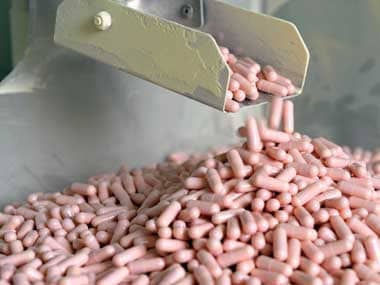The Japanese drug major, Daiichi Sankyo, has made amends for the huge mistake it committed in 2008 when it bought itself into the Indian generic drug manufacturer Ranbaxy Laboratories Ltd for a whopping $3.2 billion. [caption id=“attachment_1621673” align=“alignleft” width=“380”]  Representational image. AFP[/caption] The Singh brothers got the lion’s share of this amount – roughly Rs 10,00 crore – for their 34 percent stake with the remaining amount going to the public shareholders who had to be compulsorily bought out at the same favorable price that was paid to the Singh brothers in a private deal. The price paid was Rs 750 per share when the going rate at the stock exchange was Rs 450. Even after allowing for control premium, the price was clearly excessive, and those in the know said sagely that winner’s curse would have its say sooner than later. And there was an unexpected curse as well – paying up the USFDA a whopping $500 million in settlement for the misdemeanors of the earlier management. But unlike Diageo which bought itself into United Spirits without proper due diligence – some of the receivables turned out to be duds with the debtors smugly saying they were eligible for set off against borrowing made by a clutch of Mallya companies – Daiichi had itself to blame for the over exuberance. It ought to have anticipated the troubled times ahead for generic manufacturers with the USFDA turning the heat on them by either having the shipment impounded at the Dutch waters on grounds of they being spurious or by citing sanitary inspectors’ reports about the squalid conditions obtaining in the facilities of these manufacturers. The multi national drug companies have always been skeptical and resentful of the generic drug makers and have been giving them trouble in some way or the other including persuading WTO to call upon member nations to adopt product patent regime for drugs if they had adopted process patent regime, conducive to copying without let or hindrance including payment of royalty. But things came to a head last year when Sun Pharma drove a tough bargain and offered 0.8 share for every single share of Ranbaxy. Ranbaxy became a minor player overnight thanks to the merger – its stakes in Ranbaxy was 63 percent for which it had to settle for a measly 9 percent stake in Sun Pharma. This was infra dig but it had no choice. One choice it had though, the one it has exercised – sell out. It has prudently chosen the bourse’s block deal platform instead of looking for an elusive strategic buyer. It knew that a single strategic buyer would hammer down the price knowing pretty well the desperation of Daiichi to exit. In a block deal on the other hand, Daiichi can introduce an element of competition by offering 5 million shares or value on offer being at least Rs 5 crore in monetary terms as mandated by the bourses. Dilip Sanghvi, the promoter of Sun Pharma, is keen to buy a part of the 9 percent stake on offer. With an expected loss of around 10 percent, Daiichi doesn’t have to worry about capital gains tax which in any case gets immunity when a sale is routed through a recognized Indian stock exchange but it doesn’t have to pay pinstriped merchant bankers for their services had they been engaged for finding the elusive strategic buyer. No one buys into a company with just 9 percent for starters because it would be a herculean task to scale this up either through stock exchange acquisitions or through aggressive takeover.
Even after allowing for control premium, the price that Daiichi Sankyo paid for Ranbaxy Laboratories was clearly excessive, and those in the know said sagely that winner’s curse would have its say sooner than later.
Advertisement
End of Article


)

)
)
)
)
)
)
)
)



